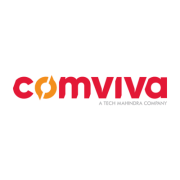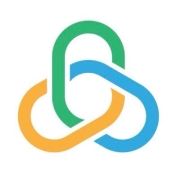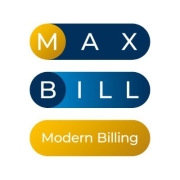Partner Relationship Management solutions assist businesses in managing and optimizing relationships with their partners. By streamlining communication and collaboration, PRM ensures efficient partner engagement and improved business outcomes.
PRM software caters to companies by facilitating effective collaboration and communication with their partners. It simplifies complex processes by offering a centralized platform for managing partner data, tracking performance, and automating workflows. Companies adapt PRM when they require enhanced partner engagement to increase channel sales and expand market reach, leveraging insights from successful peer implementations. Users commonly note the improved channel performance metrics and streamlined partner onboarding procedures provided by these solutions.
What are the critical features of a PRM solution?Industries like technology, manufacturing, and retail implement PRM solutions to optimize partner relationships, streamline sales processes, and provide valuable insights for strategic decision-making. In manufacturing, PRM systems are used to manage large networks of distributors and suppliers. Technology firms benefit from these solutions by using them to enhance the collaboration between different partner segments.
PRM solutions are helpful for organizations looking to strengthen their partner ecosystems. By improving communication and collaboration, these solutions enable businesses to harness the full potential of their partnerships, ultimately driving revenue growth and market expansion.
| Product | Market Share (%) |
|---|---|
| PartnerStack | 12.9% |
| Impartner PRM | 11.6% |
| impact.com | 9.0% |
| Other | 66.5% |



































































Partner management is important because it can ensure channel managers avoid duplication within the company and streamline all of their partner sales processes.
Many businesses rely on partner companies to sell their products on their behalf as part of a channel strategy, in addition to or instead of using a direct distribution channel. These indirect channels include: value-added resellers, merchants, consultants, managed service providers, systems integrators, original equipment manufacturers, or independent software vendors.
A company can use partner relationship management to create a successful business by making use of the automation of critical processes, like lead assignment, self-service portal access, and training programs. Partner relationship management enables you to manage both your relationships with partners and their relationships with you while effectively assisting businesses in streamlining their overall operation. Partner relationship management is designed to hasten the uptake, interest, and sales of your products. Because partners can more efficiently serve all clients, the end result is happier partners who sell more products.
PRMs can sometimes be integrated with CRMs, but they are most commonly separate software solutions. CRM (customer relationship management) software enables businesses to keep track of communications between a company and its prospective and current clients. All pertinent customer data, including contact details, history, and summaries of transactions, are stored as a living record in the CRM database.
CRM software is not intended for managing your partner ecosystem. You could say PRM is a specialized form of CRM, focused on optimizing partner channel sales. PRM software manages a company's relationships with its indirect sales teams.
In short, PRM software is concentrated on getting a partner to sell on your behalf, as opposed to CRM software, which is designed to get an end customer to make a purchase from you. You may need both tools if your company uses both direct and indirect sales channels in a hybrid selling program.
A partner relationship management (PRM) system is a class of technologies used by businesses to streamline, improve, amplify, and reinforce business operations with their indirect partners in order to achieve mutual growth. PRM systems give users visibility into and control over complex channel organizations. Each partner has access to a private site through the use of the software, where they can access documents, marketing materials, market development funds (MDF), opportunities, and business deals.
Additionally, partner relationship management systems provide automated, multitiered operation methods that will reduce resource investments and boost sales opportunities. More sales prospects will result in a larger market share and a higher level of satisfaction among the partner network.
PRM systems are becoming a crucial component of effective channel management and partner programs, being used in everything from joint business planning and market development fund administration to onboarding and training channel partners.
PRM solutions streamline communication and workflow between you and your partners. They provide a central platform to share resources, track tasks, and manage projects. By offering tools such as instant messaging, document sharing, and real-time updates, these solutions improve coordination, reduce response times, and ensure everyone is aligned with the strategic goals. Effective collaboration through PRM tools can lead to increased productivity and better partner relationships.
What features should you look for in a PRM solution?When selecting a PRM solution, prioritize features like user-friendly interfaces, scalability, robust reporting, and analytics. Look for customization options to tailor the platform to your specific needs. Essential functionalities include lead distribution, deal registration, training modules, and seamless CRM integration. These features enable you to effectively manage partner activities, optimize performance, and drive revenue growth.
How can PRM solutions improve partner engagement?PRM solutions enhance partner engagement by offering personalized experiences and supporting tailored communication strategies. Through automated marketing campaigns, training certification programs, and gamification techniques, you can maintain high engagement levels. PRM platforms track partner interactions, allowing you to customize and refine your engagement tactics, ultimately enhancing loyalty and performance.
Why is data management important in PRM systems?Data management is crucial in PRM systems because it ensures accurate and up-to-date information about your partners, their performance, and market trends. Effective data management allows you to make informed decisions, identify opportunities for growth, and mitigate risks. By leveraging data, you can optimize partner selection, track success metrics, and align strategies with your business objectives.
What are the challenges in implementing a PRM solution?Implementing a PRM solution can present challenges such as integration with existing systems, user adoption, and initial setup complexity. You may face resistance to change or require extensive customization to suit specific business needs. Proper planning, stakeholder buy-in, and comprehensive training programs are essential to overcoming these challenges. A successful implementation involves choosing the right solution, aligning it with strategic goals, and ensuring continuous support and updates.